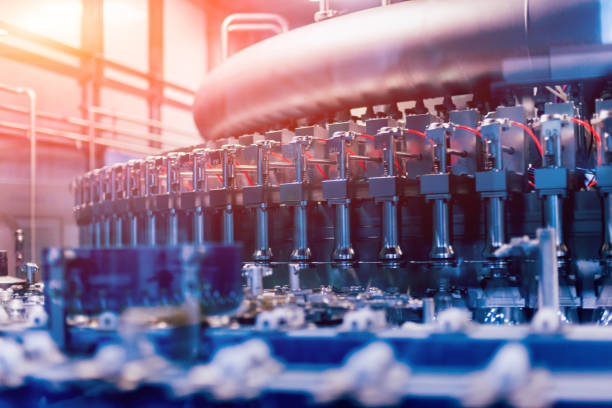2) Capacity overview
Figure 7: Production Capacity and Operating efficiency of plastics, Fy13
India has a ~2.9 MnTPA of PE production capacity out of which 1.6 MnTPA is HDPE
capacity, 1 MnTPA is LLDPE and rest is LDPE capacity. PP and PVC also have the large
production capacities, i.e., 3.7 MnTPA and 1.3 MnTPA respectively. PVC is one of the
major products where capacity growth in past had been significantly lagging demand
growth.
India has a ~400,000 TPA production capacity of PS and EPS. However, all these
facilities are based on imported styrene since there is no local production of Styrene. In
case of Engineering Plastics, there is a significant opportunity in India. Currently for
Source : Industry reports, Analysis by Tata Strategic
125%
100%
75%
50%
25%
0%
3,600
3,000
2,400
1,800
1,200
600
-
PE PP PVC PS
Capacity Operating Efficiency
Knowledge &
Strategy Partner
12
A report on
Plastics Industry
ABS India has a 100,000 TPA production capacity, while PC base resins are all imported.
Polyamides have a limited production capacity, while other major engineering plastics
are being mostly imported to cater the domestic demand.
Reliance Industries Ltd. (RIL) is the largest producer of commodity plastics in India. It
has 1.16 Mn Tonnes per annum (TPA) capacity of PE, 2.7 MnTPA capacity of PP and
650,000 TPA capacity of PVC (Refer Table 2). RIL's production facilities are located in
Gujarat and Maharashtra. RIL is the only producer of LDPE in India.
Haldia Petrochemicals Ltd. (HPL) is another key player with PE capacity of 710,000 TPA
and PP capacity of 390,000 TPA. HPL's Plants are located in eastern region of India.
Other major players are Indian Oil (IOCL) & Gas Authority of India (GAIL) with their
plants located at Panipat and Auraiya respectively. These plants mainly cater to the
northern regional demand of plastics. IOCL have 650,000 TPA production capacities of
PE and 600,000 TPA of PP, while GAIL has 505,000 TPA capacity of PE.
India has significant production capacity of Plastics. Polyethylene (PE) continues to be
the largest commodity with LLDPE experiencing the fastest growth in this category.
Current polymer capacities are mostly under-utilized with an operating efficiency
varying from 66%-86%, expect for PVC, where production matches with capacity (Refer
Figure 7).
Table 2: Production Capacity of plastics by major players, FY13
Producer PE PP PVC Others
RIL 1,165,000 2,700,000 650,000 -
IOCL 650,000 600,000 - -
GAIL 505,000 - - -
HPL 710,000 390,000 - -
Chemplast Sanmar - - 250,000 -
Finolex - -
270,000 -
Supreme - - 272,000
Ineos ABS - - - 60,000
Source: Plastindia, Analysis by Tata Strategic
A report on
Plastics Industry
Knowledge &
Strategy Partner
13
In downstream plastic processing, India has over 23,000 processing units. Total
Machines installed for plastic processing were 98,000 in FY13. The total processing
capacity has increased to 30 .0 MnTPA in 2013 from 11.7 MnTPA in 2006.
In Northern India, IOCL and GAIL are the two plastic producers with plastic production
capacity of 1.25 MnTPA and 0.5MnTPA. Indian Oil Corporation Limited (IOCL) is the
largest oil company in India in terms of revenues. It is promoted by the Government of
India with Government holding 79% shares. IOCL commissioned its Panipat cracker in
February 2011. The Group owns and operates 10 of India's 20 refineries with a combined
refining capacity of 65.7 MnTPA.
Govt. of India has 57% stake in GAIL. It is a dominant player in natural gas trading
business and uses natural gas as the feedstock for production of ethylene and in turn
produces Polyethylene. GAIL has plans to double its plastic production capacity by
2014. HMEL's Bhatinda Polypropylene plant (0.44MnTPA) was commissioned in 2012.
All put together the plastic production capacity is expected to go up to 2.5MnTPA by
2014-15. The figure below maps the plastic production facilities along with their
capacities.
Availability of ~2.5 MnTPA of plastics in Northern region may result in spur of
investments in downstream plastic processing. Moreover since the north region does
not have access to ports, hence the import/ export potential is restricted because of
additional cost of transportation. This could result in ensuring a self-sufficient demandsupply scenario for the north as the optimal solution.

